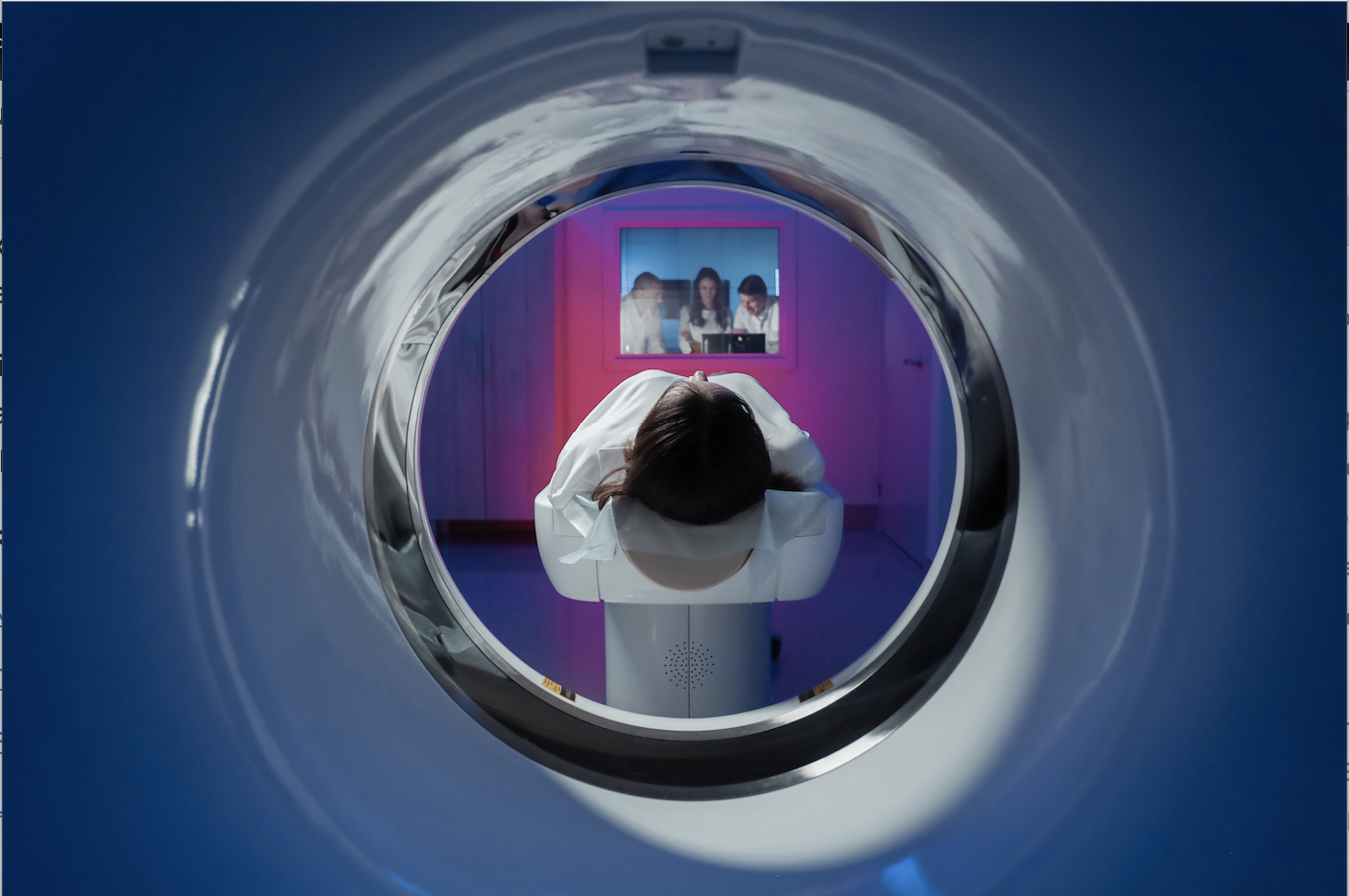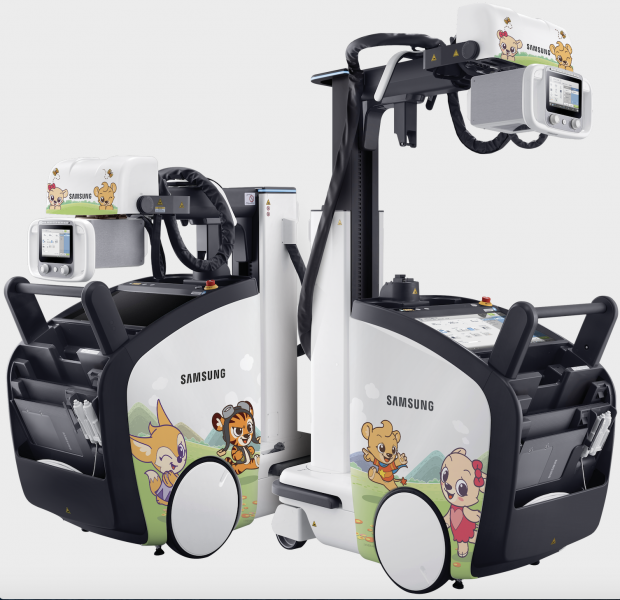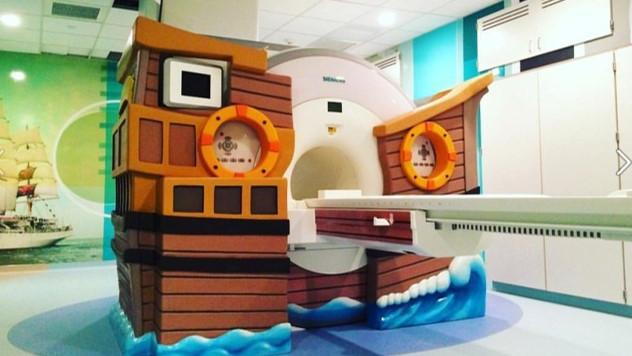
Getty Images
Let’s face it, kids hurt themselves. They jump off structures that are too high, slip off monkey bars, or some are born with conditions such as hip dysplasia that cause them to need multiple diagnostic images taken.
Conventional medical X-ray imaging has led to many improvements in the diagnosis and treatment of numerous medical conditions in pediatric patients.1 However, it comes at a cost as high dose levels can pose great risks to young patients, including increased risk of leukemia, and brain and thyroid cancer. Dose is also cumulative, so repeated exposure elevates risk, and children have higher radiation sensitivity since their organs are still in development.2 Because of these factors, medical device companies are focusing in on advancing dose level technologies in order to ensure patient safety and to keep up with the market.
Ionizing Radiation
Computed tomography (CT), fluoroscopy and the conventional X-ray all use a form of radiation called ionizing radiation. These forms of technology allow us to generate images of the human anatomy, which helps doctors to noninvasively diagnose and monitor disease or defects of the body. The use of ionizing radiation in this form could be considered one of the greatest advancements in medicine, but over time and extended use the energy could potentially cause damage to DNA.3 Conventional medical X-ray imaging produces relatively small radiation levels when compared to other imaging techniques previously listed, however, the cumulative radiation from multiple X-ray exams cannot be overlooked. Technologies are being developed to combat this. For example, Samsung developed an image processing engine, known as S-Vue, which offers comparable image quality by utilizing an advanced feature preserving noise reduction algorithm.2,i
This unique processing system was discovered by a group of distinguished researchers based out of Korea. The team determined a way to distinguish between quanta, a patient’s anatomy and the noise — captured radiation that is not needed. The discovery led to this creation, which can remove the noise while maintaining the integrity of anatomy.
New forms of technology are imperative to pediatric health for numerous reasons. Often, when you get injured, a doctor’s primary screening tool is an X-ray. If additional screening is needed, the patient would receive a CT scan, which uses a higher dose of ionizing radiation. By ensuring a patient is receiving the lowest X-ray dose possible, there is less of a concern if a more advanced form of imaging is needed.
Probable Dose Reduction Studies
Recently, a team at The University of Texas Health Science Center at Houston, conducted a study that aimed to evaluate the amount of probable dose reduction in multiple pediatric age groups. The subject pool was comprised of 20 pediatric patients aged 1 month to 14 years who required 2 chest anteroposterior (AP) X-ray exams within 3 months. From their conventional dose X-ray images, low dose images were generated by using the dose simulation method, which recreates exposure parameters based on body depth and bodyweight. A team of radiologists then evaluated and selected the lowest acceptable dose image for each patient. Their purpose was to select the image in which the quality appeared to be equivalent to the conventionally acquired image.2
The following statistical results were found:
- The age-averaged entrance surface dose (ESD) for conventional dose levels was 58.49 ± 34.02 μGy while the low dose level was 30.86 ± 17.00 μGy.2
- The average radiation dose reduction rate was found to be 47% percent of conventional dose levels.2
Another study conducted by a team of researchers from the Department of Pediatrics and Department of Radiology and Institute of Radiation Medicine at Seoul National University Hospital set out to develop a low-dose radiography protocol for neonatal ICU (NICU) use. The prospective randomized study examined two different mobile radiography protocols on 40 neonates that required thorax and abdomen examinations. Three protocols were determined — protocol A: 100 percent of equivalent dose with conventional protocol; protocol B: 80 percent of equivalent dose with conventional protocol; and protocol C: 64 percent of the equivalent dose with conventional protocol.4, ii
Both low dose protocols B and C were found to be non-inferior to the conventional protocol, both in terms of image quality and single anatomic quality criteria. By adding filtrations and a new denoising technique, dose levels can be lowered without affecting image quality.4, ii
These findings are notable as they exhibit the use of low dose technology in practical settings. The U.S. Food and Drug Administration (FDA) recommends that medical X-ray imaging exams should use the lowest dose of radiation as possible and should always be adjusted based on the specific size of the pediatric patient.1
Continuing to Reduce Exposure
It can be concluded that dose reduction will remain a hot topic in the field of radiology. There are many new tools on the horizon that will allow us to reduce exposure while maintaining image quality. Some investigation is being done on a few clinical challenges that companies are presented with when creating new dose protocols. To find the correct dosage level, it would be unethical to order repeat scans since it would not only increase patient exposure, but there is no guarantee of image quality. To combat this, a dose simulation tool has been developed. Its purpose is to safely test dose reductions on an image in a controlled environment. Without additional exposure, it takes a raw image and simulates lower doses on top. This allows for a proper protocol or technique to be created without having to put a patient at risk for over-exposure.
Medical device companies worldwide are contributing to this area with patient care in mind. The ultimate end goal is to make medical imaging as safe as possible, for children and adults alike. However, it should be noted that through the use of basic imaging technology, we as a society have been able to learn a great deal about the human anatomy, allowing doctors to create targeted treatments. CT, fluoroscopy and the conventional X-ray all pose risks to our health when used in excess, however, it is an imperative tool for diagnosing. The creation of low dose technology for conventional X-ray exam use has skyrocketed us into the future of medicine, but more importantly, is keeping our kids safe.

David Legg was appointed Vice President, Head of Ultrasound and Digital Radiography Business for Samsung, in September 2018. Prior to this, he held positions of increasing responsibility, including vice president of sales, and vice president of corporate accounts, both with Samsung. Prior to this, Legg held a number of senior leadership and general management positions in both sales and corporate accounts with GE Healthcare.
References:
1. U.S. Food & Drug Administration (FDA). Pediatric X-ray Imaging. Available at: https://www.fda.gov/radiation-emitting-products/medical-imaging/pediatric-x-ray-imaging. Accessed June 3, 2021.
2. John, Susan MD. Pediatric X-ray Dose Reduction and Image Quality Maintenance Using S-Vue. Samsung White Paper. 2019
3. U.S. Food & Drug Administration (FDA). Medical X-ray Imaging. Available at: https://www.fda.gov/radiation-emitting-products/medical-imaging/medical-x-ray-imaging. Accessed June 3, 2021.
4. Choi, Gayoung et al. Development of Quality Controlled Low-Dose Protocols for Radiography in the Neonatal ICU a New Mobile Digital Radiography System. American Journal of Roentgenology. 2019
i The non-clinical and clinical image evaluations show that the proposed devices with the new IPE employing and advanced noise reduction algorithm are able to reduce x-ray dose up to 47.5% for abdominal radiographs of average adult and up to 45% for pediatric abdomen, 15.5% for pediatric chest, and up to 27% for pediatric skull exams, compared with radiation doses needed to obtain similar image quality using the old IPE on the same x-ray systems.
ii The claim concerning Samsung DR is based on limited phantom and clinical study results. Only routine PA chest radiography and abdominal radiography for average adults and pediatric abdominal, chest, skull radiography were studied, excluding pediatric patients under 1 month old. (FDA cleared - K172229, K182183) In practice, the values of dose reduction may vary accordingly. These clinical images calculate the dose reduction rate from its own standard dose at the clinical site.
Related Pediatric Imaging Content:
New FDA Guidance Eliminates Uncertainty for Pediatric X-ray Exams
Trends and Best Practices in Radiation Dose Monitoring
Pediatric Imaging Growing Up Fast
Use of Dedicated Pediatric CT Departments Reduces Dose






 December 05, 2025
December 05, 2025 









